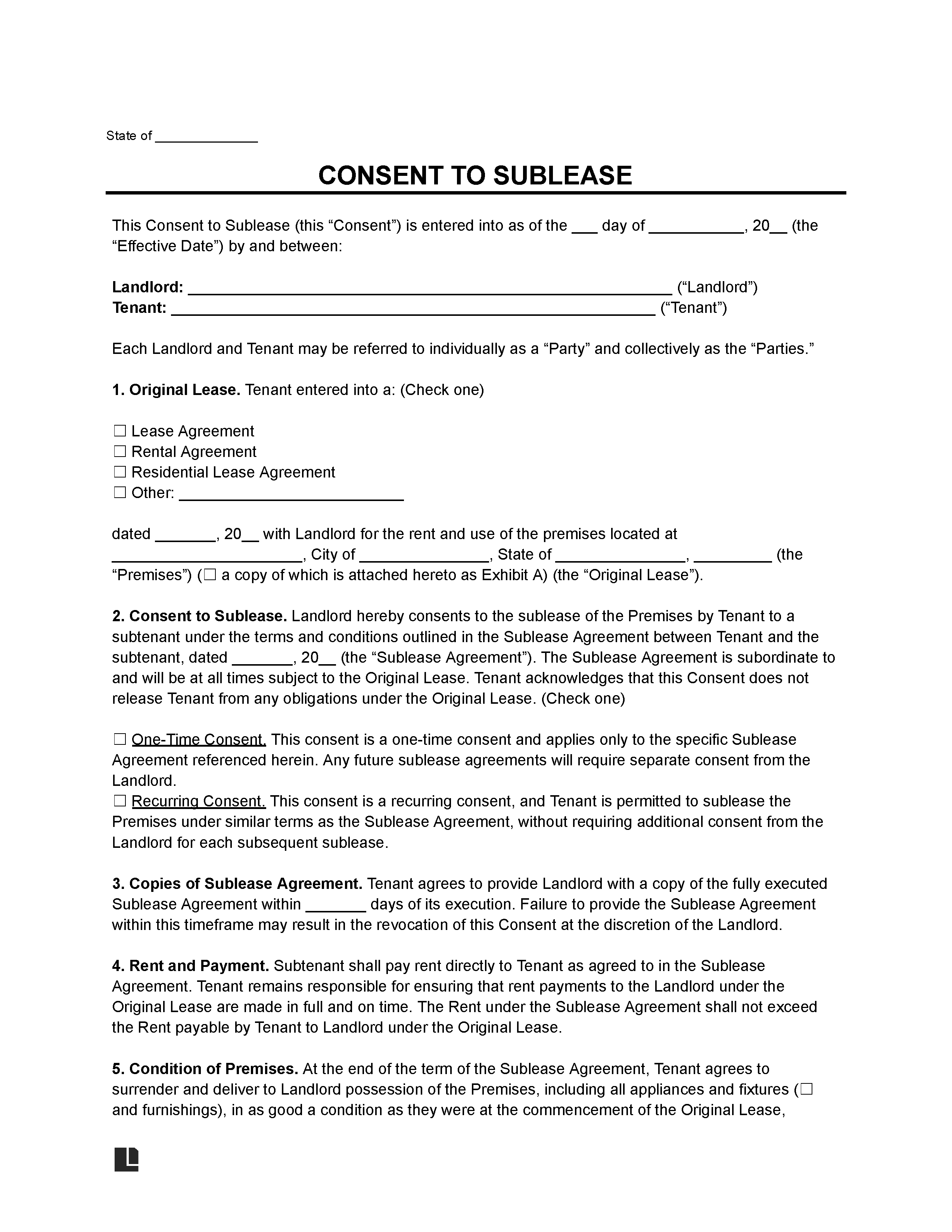A landlord sublease consent is a formal document in which the property owner or manager gives written permission for the tenant to rent out their leased property, or part of it, to another party (the subtenant).
Subleasing without the landlord’s consent can lead to legal ramifications, including eviction, penalties, or breach of contract lawsuits. Even if the subtenant pays rent directly, the original tenant is still legally responsible for rent and damages under the original lease.
Common Uses
- Simplified management of multiple tenants
- Temporary relocation or extended absence
- Job relocation or moving to a new home
- Facing financial hardship or potential eviction
- Transition between lease agreements
- Student housing and seasonal rentals
- Managing family obligations (elder care or relocation for family needs)
How to Protect Yourself When Subleasing a Property
When subletting, it’s essential to take certain precautions to protect your rights as a sublandlord:
- First, always obtain a landlord’s consent to ensure the process is legitimate and meets the original lease terms.
- Second, it’s wise to screen potential subtenants by having them complete a rental application, allowing you to verify their financial and rental history.
- Finally, both parties should sign a sublease agreement that clearly outlines the rights, obligations, and any specific terms agreed upon for the sublet.
Key Elements in a Landlord’s Consent to Sublease
A well-drafted landlord sublease consent should include:
- Identification of All Parties: Full names of the landlord, tenant, and subtenant.
- Sublease Terms: Duration, rental amount, payment structure, and any special conditions.
- Liability Provisions: Clarification on who holds responsibility for damages, late payments, and other lease violations.
- Multiple Subleases: Whether the tenant is allowed to sublease the property multiple times during the lease term or if this is a one-time permission.
- Consent to Sublease Entire or Partial Premises: Whether the entire rental unit or only part of it (e.g., a room) is being subleased.
- Continuing Liability of the Tenant: Even though the tenant subleases the property, they remain fully liable for fulfilling the terms of the original lease.
- Modifications and Alterations: Whether the subtenant is allowed to make modifications to the property, such as painting or installing fixtures, and whether the landlord must approve these changes.
- Additional Terms and Customizations: Parking spaces, storage, and amenities.
- Governing Law: This can be particularly important in cases involving tenants or subtenants from different states.
- Signatures and Dates: Binding the agreement legally for all parties.
Landlord’s Consent to Sublease Sample
You can download a landlord’s consent to sublease below in PDF and Word formats.


